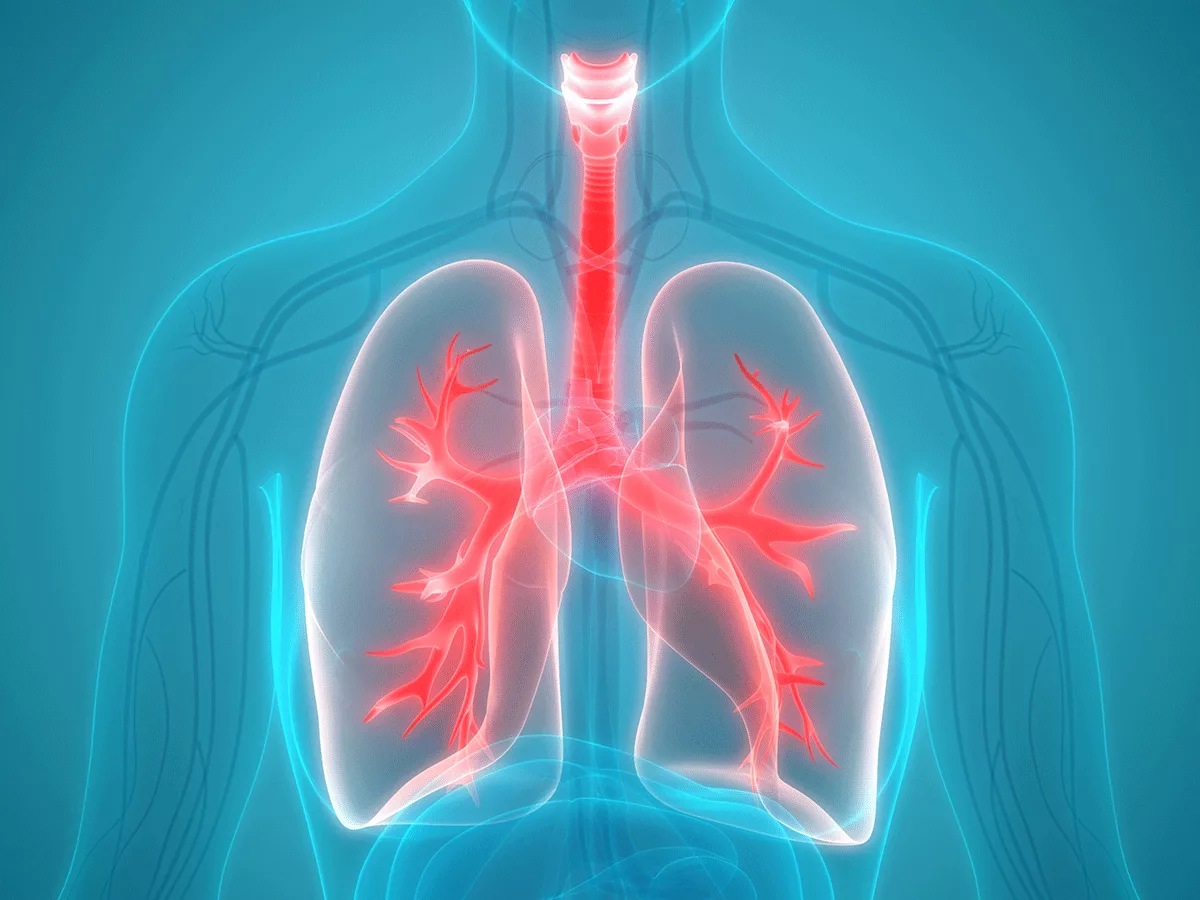An Australian-led study reported in the January 25, 2021, online edition of Nature Immunology has identified a new immunomodulatory pathway within the gut-lung axis that enhances microbial tyrosine metabolism, which could be targeted to treat or prevent atopic asthma and other inflammatory diseases.
"To our knowledge this is the first report of the new pathway, the discovery of which was completely unexpected," said study co-leader Benjamin Marsland, professor and VESKI innovation fellow in the Department of Immunology and Pathology at the Central Clinical School of Monash University in Melbourne.
"This pathway can lead to reduced infiltration of eosinophils and neutrophils, which could have benefits in treating asthma and other inflammatory diseases including [chronic obstructive pulmonary disease] COPD and viral exacerbations of disease," said Marsland.
Currently available treatments for the chronic airway disease, including inhaled steroids and long-acting beta-agonists, are relatively safe and effective, but there is room for improvement, noted Marsland.
"The safety profile of currently approved asthma treatments is good, but there is a need for new therapeutics that can target treatment-resistant forms of asthma, such as steroid-resistant severe asthma and wheeze," he told BioWorld Science.
Therapeutic candidates
In this regard, "microbial metabolites are particularly attractive, yet largely unexplored therapeutic candidates," said study co-leader Tomasz Wypych, a post-doctoral research fellow in the Marsland Respiratory Immunology Laboratory at Monash.
"Their clinical use would allow standardized treatments with defined mechanisms of action, possibly translating into higher efficacy and reproducibility, and fewer side effects," said Wypych.
"This is in contrast to the use of viable microbes, such as probiotics, which are more likely to trigger multiple, undefined pathways, and whose function may be more prone to fluctuate between individuals."
Allergic asthma is characterized by the production of proinflammatory type 2 cytokines, synthesis of immunoglobulin E (IgE), goblet cell metaplasia and inflammatory cell influx, resulting in airway remodeling.
The disease is due to dysregulated interaction between the airway epithelium and immune cells, including dendritic cells (DCs), in response to allergen exposure.
Supporting this, sensing of house dust mite (HDM) extract via Toll-like receptor 4 (TLR4) expressed on the airway epithelium has been shown necessary for activating pulmonary DCs and initiation of allergic sensitization.
However, the immunomodulatory properties of other receptors and ligands on epithelium-driven DC activation, which could underlie differences in asthma susceptibility, remain unclear.
Previous research has identified the involvement of a deubiquitinating enzyme, A20, expression of which was reduced in the airway epithelia of asthma patients, with A20 induction by exposure to endotoxin protecting mice against allergic airway disease.
This suggests endotoxin exposure might mimic exposure to a rural environment, which is associated with protection against asthma, with similar benefits having been reported with diet, including fiber consumption or breastfeeding.
This protective effect of dietary fiber consumption depends on production of short-chain fatty acids in the gut that are released systemically and influence hematopoiesis.
However, although both the rural environment and dietary protective effect on atopic asthma involve microbiome changes, the impact of microbes or their metabolites on the airway epithelium remains unknown.
Besides environmental cues, host-intrinsic factors contribute to microbiota diversification, which is usually associated with health benefits via generation of a diverse range of antibodies.
This provided the rationale for the new Nature Immunology, study, in which the Monash researchers collaborated with Swiss scientists at Lausanne University Hospital to investigate the impact of restricted dietary antibodies on the gut microbiome and assess its impact on airway inflammation.
Using a mouse model of a restricted antibody repertoire, the research team identified a role for antibody-microbe interactions in shaping a community of bacteria with an enhanced capacity to metabolize L-tyrosine.
This model led to increased concentrations of the gut flora metabolite, p-cresol sulfate (PCS), which was demonstrated to protect the host against allergic airway inflammation.
"We found that the protective effect we had observed and the production of PCS was lost when mice were treated with antibiotics to remove the microbiota, showing that the microbiota were required for the metabolism of tyrosine to PCS," explained Marsland. Moreover, "we found that giving mice either L-tyrosine or PCS provided significant protection against lung inflammation and that PCS travels all the way from the gut to the lungs, and acts on epithelial cells lining the airways to prevent the allergic asthma response."
The researchers also tested the metabolites in animal models of acute respiratory distress syndrome (ARDS), which is a common killer of people with serious COVID-19, and found them to be protective against ARDS.
They then demonstrated that PCS selectively reduce chemokine (C-C motif) ligand 20 (CCL20) production by airway epithelial cells due to an uncoupling of epidermal growth factor receptor (EGFR) and TLR4 signaling.
This is a highly significant finding, as "CCL20 is an important chemokine that leads to the recruitment of specific immune cell types into tissues," Marsland said.
"By reducing the CCL20 production by inhibiting EGFR-TLR4 signaling pathways, we have identified a novel pathway that could be targeted to reduce inflammation and are now very actively pursing the translation of these findings into new therapies against inflammatory diseases."
These findings made in mice will likely reflect the immune response to allergic asthma and other inflammatory diseases in humans.
"Mouse and humans share similarities between immunological pathways and cell types, such as eosinophils and neutrophils being two of the major cell types underlying asthma pathogenesis in humans," said Marsland.
Moreover, "a fundamental observation made in this work is that metabolites produced in the gut can make it into the airways," he noted.
"This suggests that gut metabolites have direct effects on airway resident cells such as epithelial cells, which we consider an exciting new research area that could potentially identify new therapeutics against respiratory diseases."

